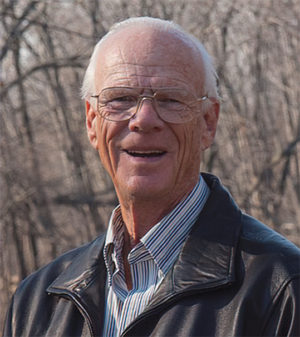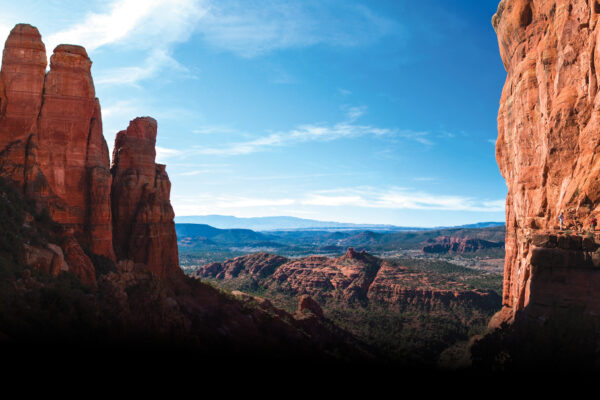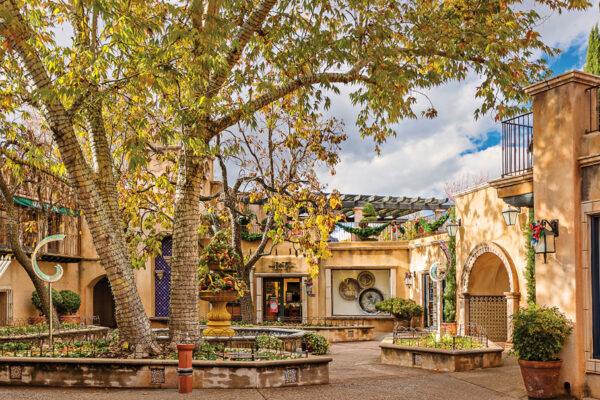Image above: Sedona photographer Ted Grussing took this photo of this bobcat in his backyard. She was about seven or eight feet away from him. “She was staring at me. She was really relaxed. I just sat there, and I was talking and shooting. She sensed a friend or at least not a threat,” he says.
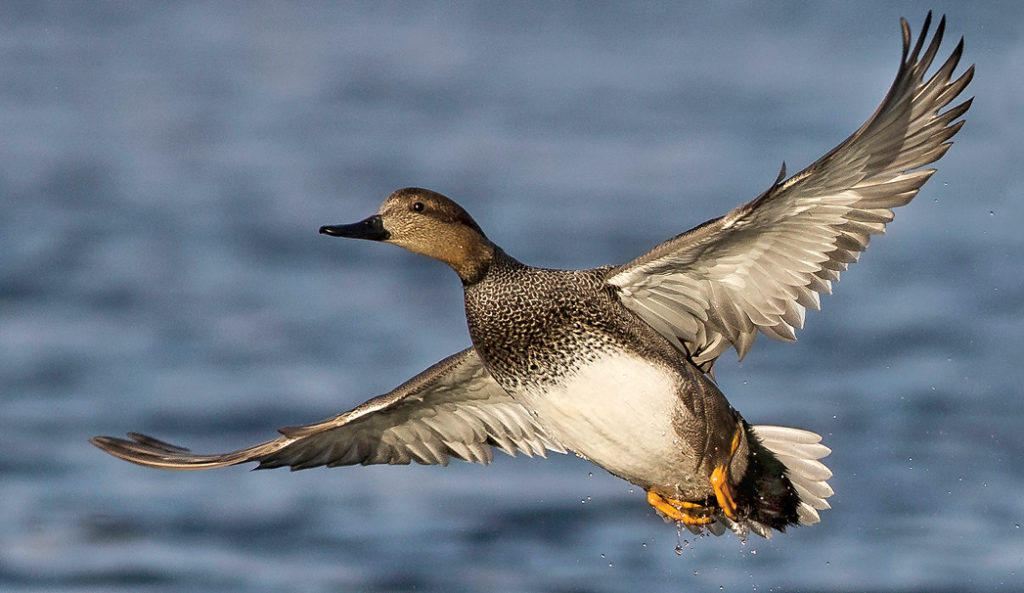
Pictured here is a gadwall duck in flight. Ted shot this image at Watson Lake in Prescott when he was in his boat. “They have some of the most beautiful patterns of any duck, but because they don’t have spectacular splashes of red or blue or green, a lot of people overlook them. But they’re absolutely beautiful birds when you get them,” he says. “She was maybe 25 to 30 feet away. You can tell with the water droplets coming off her feet that she had just taken off.” As far as what he likes about this particular photograph: “It’s just the sheer elegance of it, and the detail and the feathers. I just love it,” he says.
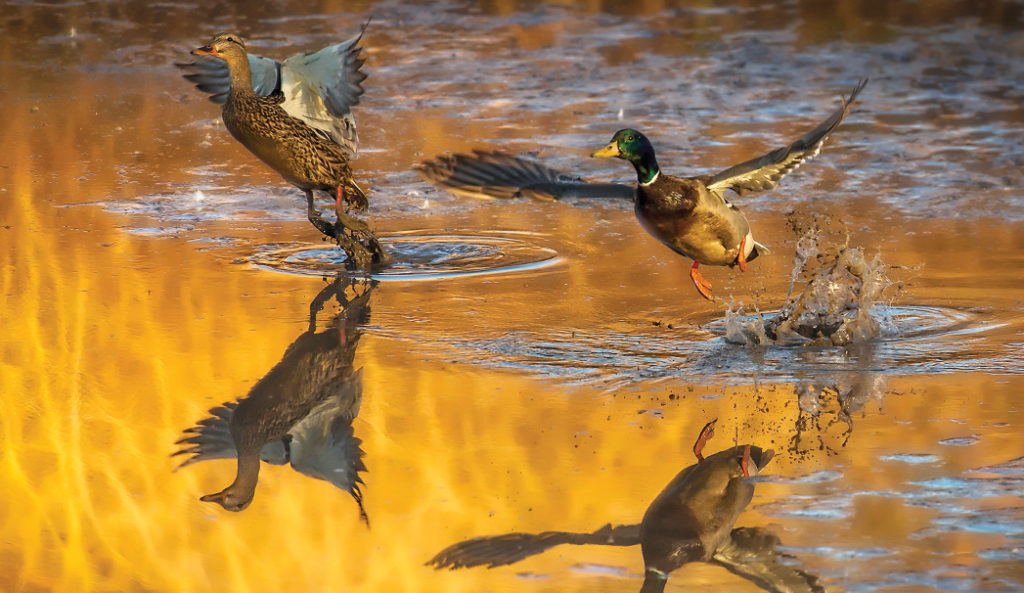
Ted photographed these two mallard ducks – one hen and one drake – one late afternoon at Bubbling Ponds Preserve in Page Springs. “There was no breeze so you have the perfect reflection in the water, and the wing positions are just wonderful too,” he says. “I just thought it was a really cool shot.”
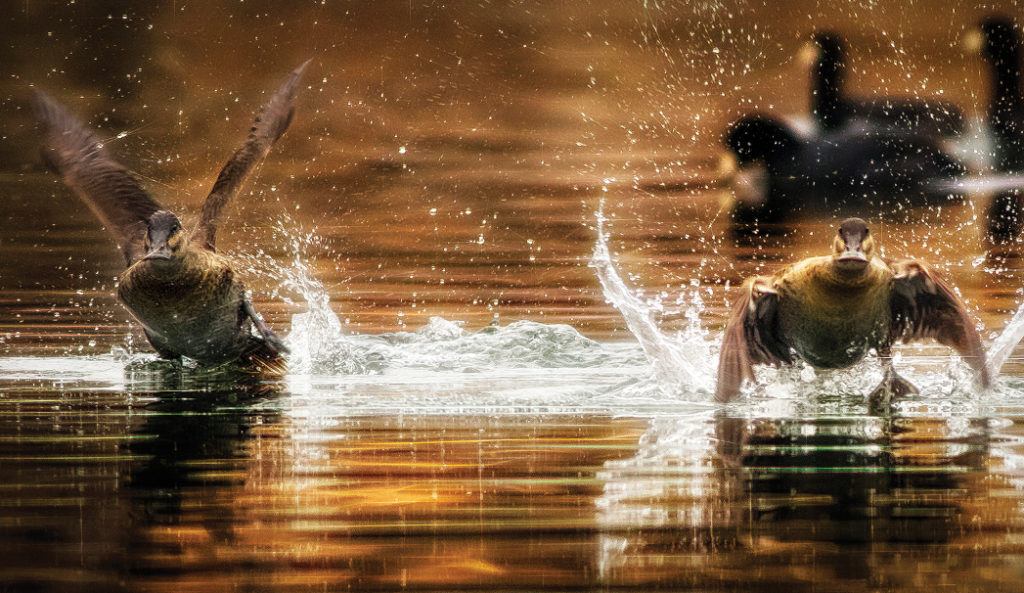
Ted photographed these two ducks at Watson Lake in Prescott. “Usually, you don’t want to shoot into the sun. But we were out, and this group of ruddy ducks decided to take off, right at us. And I thought, ‘This could really be some fun stuff.’ So I just let the camera fly,” he says. “It’s backlit by the sun so you get them haloed and the water illuminated by the sun. I just thought it was really cool.”

Another gadwall duck flying high at Watson Lake. “This is what you get in wildlife. You look at it, and it’s powerful. That water is going all over because the duck has just exploded out of the water. That’s what it is, and that’s why I like it,” he says.
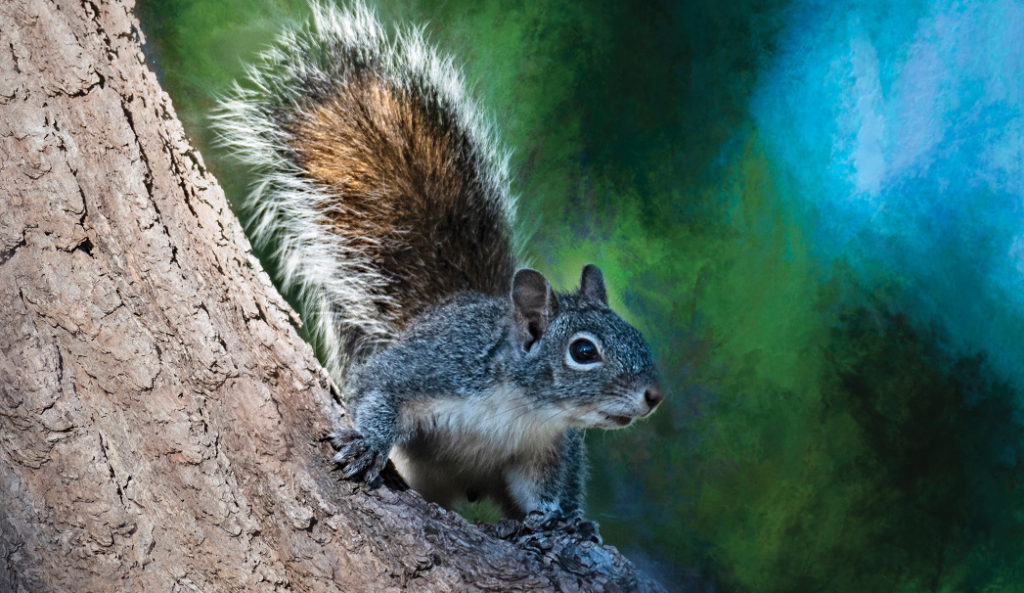
“I just think they’re cute.,” says Ted of squirrels. “They’re silly little creatures. They don’t know they’re food, but they are food. The detail you get in the tail, with the whites, the browns and the blacks. I just like squirrels. I always have.” Ted photographed this squirrel just outside of his home.

Pictured here is a different bobcat than the one on the opening spread. Ted shot about 150 images of this big cat in his backyard. “It was a really hot day. He was under a tree. And then I went over, started talking to him and shooting at the same time,” he says. “This is actually a yawn. He looks ferocious. I mean, look at those teeth. It’s a young cat because his teeth are clean and white.”

An American Kestrel hawk photographed on Bill Grey Road in Sedona. The hawk belongs to Flagstaff-based falconer Michelle Losee.

An elk in Payson that Ted photographed one Thanksgiving when he was visiting a friend. “I like that she has a little food hanging from her mouth,” he says.
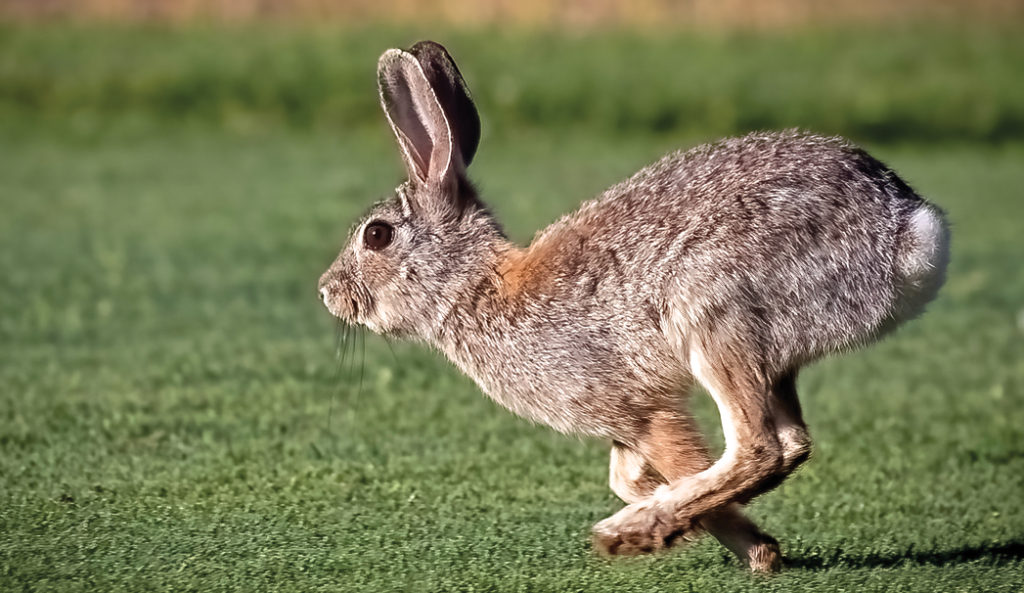
A rabbit takes off nearby Ted’s home.

A coyote photographed in the Village of Oak Creek at sunset. Ted was driving and pulled over to capture this image when he saw this coyote. “One of the most beautiful coats I’ve ever seen, and the light was great,” he says of the coyote.

Ted snapped this shot during a morning walk. The bird was perched on top of a bush in his neighbor’s yard. “The lighting was fantastic. The background was good, and he had this quizzical look on his face,” says Ted. “He was keeping watch over about six or seven other quail.”

Great horned owls peering out from a cliff face in Lake Pleasant in Peoria. See how their feathers are molting? “I had passed by there maybe a dozen times without seeing them. Some fisherman in another boat right near us said ‘Have you seen the owls.’ I said, ‘No. Where are they?’ We followed them over there to this cliff face, and there they were. It was really cool,” says Ted.
An Interview with Ted Grussing
You might know of Sedona resident Ted Grussing’s newsletter. He’s been creating one since 2000. In each issue, he showcases a photograph of an animal he’s taken recently. Many of the animals, although not all, are pictured in or near the backyard of his Sedona home in the Village of Oak Creek. “There’s so much if you just look,” he says, of the wildlife he shoots daily all over town. He moved to the area in 1992. He worked as a lawyer for more than four decades, but he’s been a photographer since he was a child. His parents gave him a Kodak camera when he was 8. He became a pro at 14. He would take his camera with him when he went hunting with his relatives in his native Minnesota. He started hunting at 10 and stopped at 30. When he’s not photographing animals, he’s also a pilot and a boater. Visit tedgrussing.com to see more of his work. Ted also will be giving an in-person presentation on Sept. 10 at the Mary D. Fischer Theatre about wildlife photography.
Sedona Monthly: What do you love about photographing wildlife?
Ted Grussing: It’s a part of life people take for granted. They may see an animal or bird or something, but they don’t think about it. They just go on about their daily lives. These are the creatures we share the planet with … they do what they do to survive. And they’re beautiful creatures. I just love to share them with other people and tell people a little bit about each of them so they can have a little more appreciation for what they will see in their lives.
Do you have any pets?
Her name is One, and she’s a nine-and-a-half year old black short hair cat. She rules this place supreme. She chases bobcats on a regular basis if they come near her property. Being smart, they run. You fly planes too. Tell us about that. I have been fascinated by aviation and flying since I was a kid and took up flying sailplanes at age 59. Hawks, eagles, ravens and more are live soaring machines, and they are also the predators I love to shoot. I was a soaring pilot for 24 years, accumulating over 3,000 hours in sailplanes and motor gliders. I know exactly how each position these live soaring machines feels because – other than the dives for prey – I have been there and done that. When I see them in the air, taking to the air or landing, I know what it is like. There is a kinship. Ditto the land-based predators. I was a hunter too.
Tell us about your working methods.
I always have a camera with me. I shoot daily. I have absolutely no idea what I’m going to send out until I sit down in the evening to start. It’s whatever gets my fancy and will blend in with the message. I take, on average, about 40,000 shots a year.
Why create and send out your newsletter?
I’ve been really blessed in my life. I’ve worked hard. I’ve had ups and downs just like everyone. It’s just a reminder and the sharing of the beauty that I see in life.


